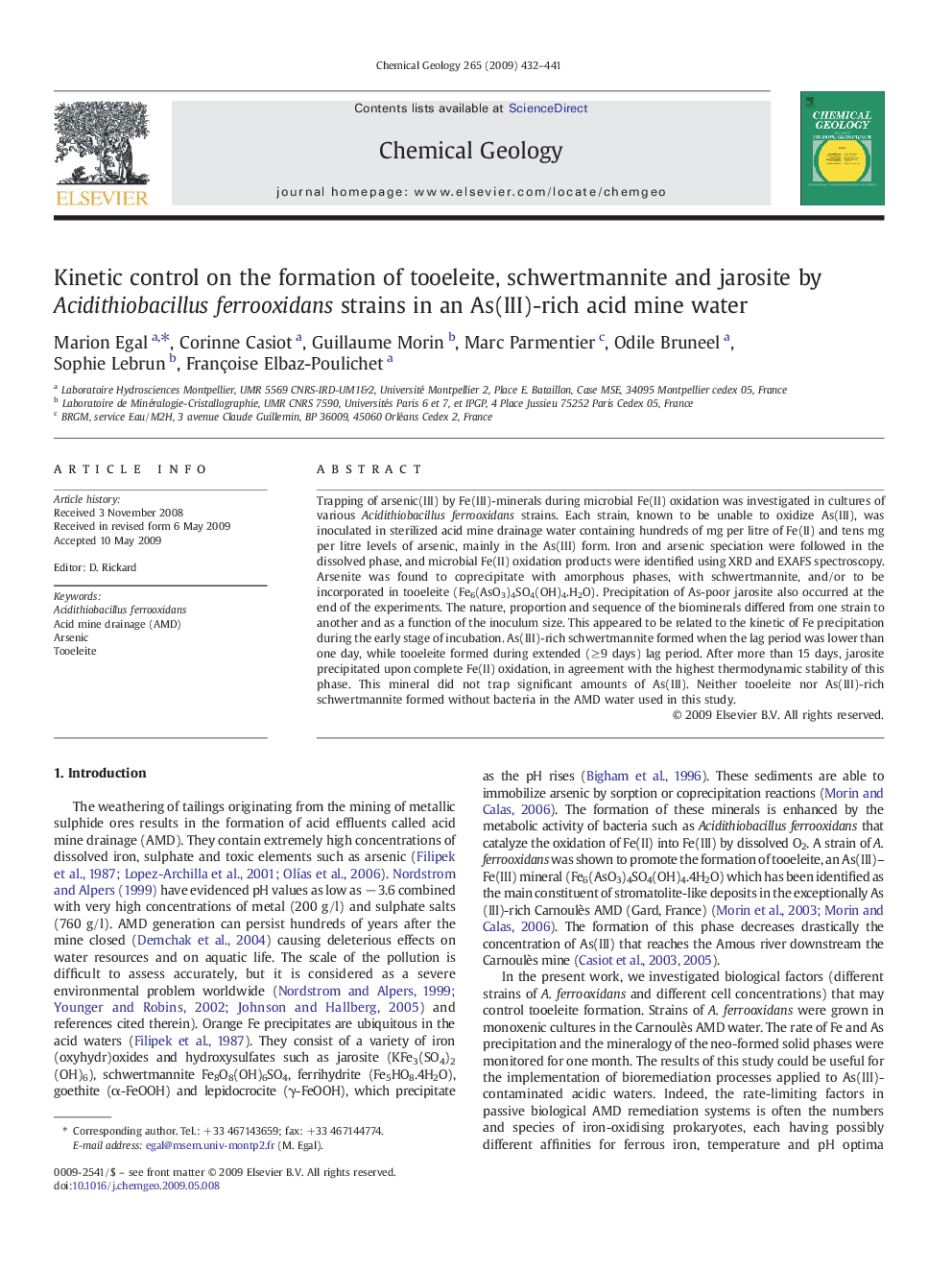| Article ID | Journal | Published Year | Pages | File Type |
|---|---|---|---|---|
| 4700227 | Chemical Geology | 2009 | 10 Pages |
Trapping of arsenic(III) by Fe(III)-minerals during microbial Fe(II) oxidation was investigated in cultures of various Acidithiobacillus ferrooxidans strains. Each strain, known to be unable to oxidize As(III), was inoculated in sterilized acid mine drainage water containing hundreds of mg per litre of Fe(II) and tens mg per litre levels of arsenic, mainly in the As(III) form. Iron and arsenic speciation were followed in the dissolved phase, and microbial Fe(II) oxidation products were identified using XRD and EXAFS spectroscopy. Arsenite was found to coprecipitate with amorphous phases, with schwertmannite, and/or to be incorporated in tooeleite (Fe6(AsO3)4SO4(OH)4.H2O). Precipitation of As-poor jarosite also occurred at the end of the experiments. The nature, proportion and sequence of the biominerals differed from one strain to another and as a function of the inoculum size. This appeared to be related to the kinetic of Fe precipitation during the early stage of incubation. As(III)-rich schwertmannite formed when the lag period was lower than one day, while tooeleite formed during extended (≥ 9 days) lag period. After more than 15 days, jarosite precipitated upon complete Fe(II) oxidation, in agreement with the highest thermodynamic stability of this phase. This mineral did not trap significant amounts of As(III). Neither tooeleite nor As(III)-rich schwertmannite formed without bacteria in the AMD water used in this study.
